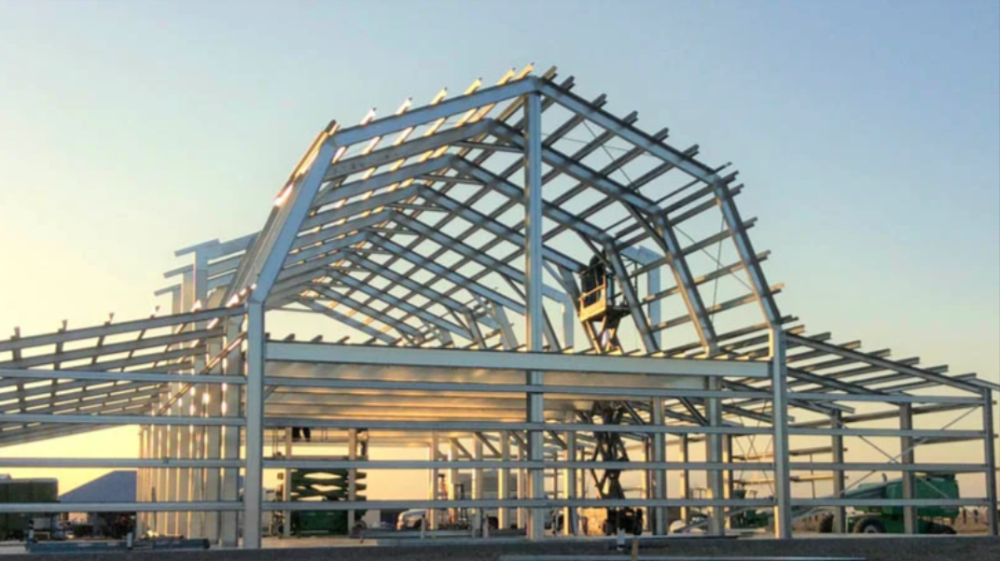High-Performance Steel Buildings: Strength and Resilience for All Weather Condition Conditions
High-Performance Steel Buildings: Strength and Resilience for All Weather Condition Conditions
Blog Article
Professional Overview to Steel Building Style: Making The Most Of Efficiency and Durability
In the realm of construction, the selection of building material holds critical importance in figuring out the efficiency and longevity of a structure. Steel, with its extraordinary strength, resilience, and flexibility, has actually arised as a favored choice for modern-day structure style. Engineers and designers are consistently exploring ingenious methods to harness the capacity of steel in creating sustainable and long-lasting buildings. From enhancing style factors to consider to applying affordable building and construction strategies, the trip towards making the most of effectiveness and long life in steel building design is a diverse one, using a mix of practical challenges and creative services that propel the market forward.
Benefits of Steel Structures
Steel structures supply exceptional resilience and cost-effectiveness contrasted to typical building products. The strength of steel offers exceptional structural stability, making it a favored choice for structures that require to stand up to extreme climate conditions or heavy tons.
In regards to cost-effectiveness, steel structures are typically more inexpensive than frameworks made from various other materials. The reliable construction process of steel buildings can lead to decreased labor prices and much shorter task timelines. Steel's resilience likewise equates to lower upkeep costs over time, as there is less requirement for substitutes or fixings compared to traditional structure products.
Style Factors To Consider for Performance
Given the benefits of steel structures in terms of longevity and cost-effectiveness, it is vital to focus on layout considerations that make best use of effectiveness and longevity. When creating a steel structure for optimal effectiveness, factors such as the insulation, orientation, and format must be very carefully thought about.

Moreover, integrating energy-efficient systems, such as cooling and heating, lighting, and renewable resource resources, can even more enhance the performance of steel structures. By integrating these design considerations, steel structures can achieve ideal effectiveness and durability, offering cost-efficient and sustainable solutions for numerous building tasks.
Architectural Stability and Long Life

Regular maintenance, including assessments for signs of wear or damage, is likewise essential for determining and addressing problems prior to they jeopardize the structure's honesty. By prioritizing structural honesty in the layout phase and throughout the structure's life-span, owners can guarantee their steel frameworks remain secure, efficient, and resilient for years to come.
Cost-efficient Construction Approaches
Effective building and construction approaches play a critical role in handling expenses without jeopardizing the high quality and image source integrity of steel building jobs. One economical approach is making use of pre-engineered steel building systems. These systems are developed off-site and after that constructed on-site, minimizing building and construction time and labor prices. In addition, pre-engineered steel structures are recognized for their resilience and need very little upkeep, resulting in long-term cost savings.
An additional cost-efficient technique is the design-build approach, where the layout and building and construction stages are integrated. This approach cultivates cooperation between the design and building and construction groups, streamlining the procedure and decreasing hold-ups and price overruns (steel buildings). By including all stakeholders from the get go, potential problems can be determined and dealt with early, conserving both time and money
Furthermore, adopting lasting construction techniques, such as making use of recycled steel and incorporating energy-efficient attributes, can lead to significant cost savings in the future. These practices not just minimize construction waste however also lower functional costs through enhanced power effectiveness. To conclude, carrying out affordable building and construction methods is crucial for making the most of effectiveness and ensuring the durability of steel building projects.
Upkeep Tips for Long Life
Correct maintenance methods are essential for making sure the longevity and structural stability of steel buildings. Regular examinations are vital to determine any type of indicators of corrosion, damages, or put on that can jeopardize the building's sturdiness. As part of an extensive maintenance strategy, it is very important to without delay address any type of concerns that arise to avoid them from rising and triggering extra extensive damages.

One more essential maintenance pointer is to evaluate the building's links, fasteners, and welds to ensure they are safe and in good condition. Any type of broken or loosened components must be repaired or replaced quickly to maintain the structural honesty of the structure. By applying a positive upkeep routine, steel building proprietors can make the most of the long life and performance of their structures.
Final Thought
In verdict, steel buildings use various advantages such as efficiency, cost-effectiveness, and long life. By thoroughly thinking about layout facets, guaranteeing architectural stability, and using economical construction approaches, steel structures can be enhanced for maximum performance and durability.
From enhancing design factors to helpful resources consider to implementing cost-efficient building and construction strategies, the journey in the direction of maximizing performance and long life in steel building design is a complex one, providing a mix of useful challenges and imaginative services that propel the sector onward.
Offered the benefits of steel buildings in terms of toughness and cost-effectiveness, it is vital to focus on design factors to consider that make best use of effectiveness and long life. When developing a steel building for ideal performance, factors such as the orientation, design, and insulation should be very carefully taken into consideration. In conclusion, carrying out cost-effective building and construction methods is necessary for taking full advantage of performance and ensuring the durability of steel structure tasks.
By carefully thinking about design aspects, guaranteeing architectural honesty, and utilizing cost-efficient building and construction methods, steel buildings can be maximized for optimal efficiency and longevity.
Report this page